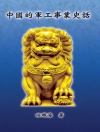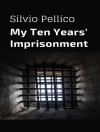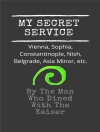A multidisciplinary overview of current research into the enduringly fascinating martial artefact which is the sword.
The sword is the most iconic of all weapons. Throughout history, it has connected various, sometimes conflicting, dimensions of human culture: physical combat and representation of political power, definition of gender roles andrefinement of body techniques, evolution of craftsmanship and mythological symbolism.
The articles collected here explore these dimensions, from a variety of disciplines, among them archaeology, medieval history, museum conservation, and linguistics. They cover topics from the production and combat use of Bronze Age swords via medieval fencing culture to the employment of the sword in modern military. They question traditional sword typologies and wide-spread theories about sword making, discuss medieval sword terminology and the use of swords as royal insignia, and describe the scientific methods for approaching original finds. Arising from an international conference held at Deutsches Klingenmuseum Solingen (the German Blade Museum), the volume provides fresh insights into the forms the sword can take, and the thoughts it inspires.
LISA DEUTSCHER and MIRJAM E. KAISER work in prehistoric archaeology, specialising in La Tène and Bronze Age swords, respectively. SIXT WETZLER is the deputy director of the German Blade Museum; his research focuses on the history of edged weapons, and their use.
Contributors:Matthias Johannes Bauer, Holger Becker, Jan-Heinrich Bunnefeld, Rachel J. Crellin, Vincenzo D’Ercole, Andrea Dolfini, Raphael Hermann, Daniel Jaquet, Robert W. Jones, Ulrich Lehmann, Claus Lipka, Stefan Maeder, Michael Mattner, Florian Messner, Nicole Mölk, Ingo Petri, Stefan Roth, Fabrizio Savi, Ulrike Töchterle, Iason-Eleftherios Tzouriadis, Marion Uckelmann, Henry Yallop
विषयसूची
Foreword
Preface
‘What is the Riddle of Steel?’: Problems of Classification and Terminology in the Study of Late Medieval Swords – Iason-Eleftherios Tzouriadis
Challenging Typologies: Swords in the Utrecht Psalter – Stefan Maeder
‘…schirmen mit Federklingen’: Towards a Terminology of Fencing Swords (1400-1600) – Daniel Jaquet
Phosphoric Iron and Welded Patterns: The Reconstruction of an Early Medieval Sword from Beckum – Ulrich Lehmann
Phosphoric Iron and Welded Patterns: The Reconstruction of an Early Medieval Sword from Beckum – Stefan Roth
Phosphoric Iron and Welded Patterns: The Reconstruction of an Early Medieval Sword from Beckum – Claus Lipka
Material and Properties of VLFBERHT Swords – Ingo Petri
A Sword from the Rhine: Restoration, Examination and Classification of a Chance Find – Holger Becker
The Highest Art of Smithery: Research on a Tyrolean Sword – Florian Messner and Ulrike Töchterle
The Battle for Glory: Form and Function of Early Nordic Bronze Age Swords – Jan-Heinrich Bunnefeld
The Iron Sword from the ‘Warrior’s Grave’ in Lanuvium – Fabrizio Savi
The Swords of the Italic Kings – Vincenzo D’Ercole
The Three Treasures in One Blade: Thoughts on a Rare Form of the Japanese Sword – Michael Mattner
‘.j. veel feble fauchon dil anxien temps.’ The Selection of the Falchion as Symbol of Tenure: Form, Function and Symbolism – Robert W. Jones
The Way of the Northmen: The Development of the Norman Sword from Duke Rollo in Normandy to Emperor Frederick II in Sicily from the Tenth to the Thirteenth Century – Nicole Mölk
Researching Bronze Age Swordsmanship: Experiments and Wear Analysis – Raphael Hermann and Andrea Dolfini and Rachel J. Crellin and Marion Uckelmann
Egenolff’s Fight Book: Form and Thought, Then and Now – Matthias Johannes Bauer
A Sword for a System: The Pattern 1796 Light Cavalry Sword – Henry Yallop
Bibliography
Index
लेखक के बारे में
Robert W. Jones is Alumni Association Coordinator and tutor at Advanced Studies in England, an independent study abroad programme based in Bath, England. He is also a Visiting Scholar in History at Franklin and Marshall College, Pennsylvania, and a Fellow of the Royal Historical Society.












